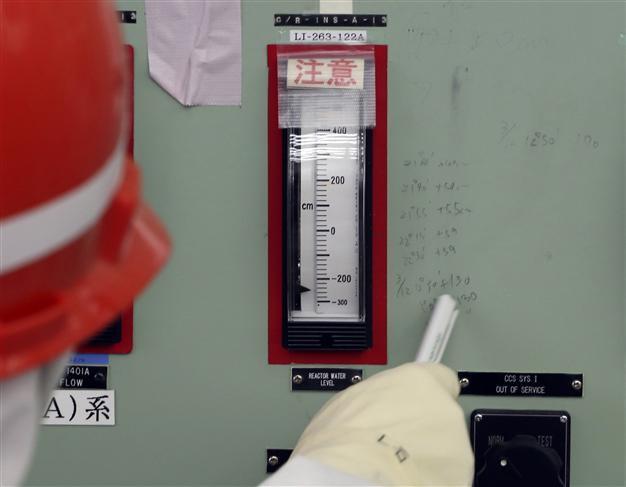World faces 'water-energy' crisis: UN
TOKYO-Agence France-Presse

Water levels at a reactor just after the March. Reuters
Surging populations and economies in the developing world will cause a double crunch in demand for water and energy in the coming decades, the UN said Friday.
In a report published on the eve of World Water Day, it said the cravings for clean water and electricity were intertwined and could badly strain Earth's limited resources.
"Demand for freshwater and energy will continue to increase over the coming decades to meet the needs of growing populations and economies, changing lifestyles and evolving consumption patterns, greatly amplifying existing pressures on limited natural resources and on ecosystems," the report said.
Already, 768 million people do not have access to a safe, reliable source of water, 2.5 billion do not have decent sanitation and more than 1.3 billion do not have mains electricity.
"Lack of access to water, sanitation and sustainable energy is an aggravating factor for poverty," Michel Jarraud, secretary-general of the World Meteorological Organization, told a conference at the United Nations University in Tokyo.
"We need to adopt more integrated policies and innovative strategies to tackle the issues."
About 20 percent of the world's aquifers today are depleted, according to the UN report.
Agriculture accounts for more than two-thirds of water use.
The World Water Development Report, the fifth in the series by the UN Educational, Scientific and Cultural Organisation (UNESCO), is an overview collated from data from scientific studies and investigations by agencies.
It said ever more freshwater will be needed for farming, construction, drinking, cooking, washing and sewerage, but also for energy production -- 90 percent of which uses water-intensive techniques today.
The report gave this snapshot of the future:
- Global water demand is likely to increase by 55 percent by 2050.
- By then, more than 40 percent of the world's population will be living in areas of "severe" water stress, many of them in the broad swathe of land from North Africa and the Middle East to western South Asia.
- Asia will be the biggest hotspot for bust-ups over water extraction, where water sources straddle national borders. "Areas of conflict include the Aral Sea and the Ganges-Brahmaputra River, Indus River and Mekong River basins," said the report.
- Global energy demand is expected to grow by more than a third by 2035, with China, India and Middle Eastern countries accounting for 60 percent of the increase.
- In 2010, energy production gobbled up 66 billion cubic metres (2,300 billion cu. feet) of fresh water -- more than the average annual flow of the River Nile in Egypt.
By 2035, this consumption could rise by 85 percent, driven by power plant cooling systems that work with water.
Shale deposits and tar sands, driving an energy boom in North America, are especially hefty in their demands for water to force out the precious gas and oil, the report said.
Even so, "they are outstripped by far by biofuels," said researcher Richard Connor, who headed the study.
Renewable sources like solar and wind energy that use far less water are gaining ground, and accounted for about a fifth of global electricity output in 2011, the report said.
But they are unlikely to expand this share significantly if fossil fuels continue receiving the bulk of subsidies, it said.
Oil, gas and coal had subsidies of $523 billion (376 billion euros) in 2011, nearly 30 percent more than in 2010, compared to $88 billion for renewables, the report said, citing International Energy Agency (IEA) figures.
Africa, Latin America and the Caribbean have plenty of potential for hydro-energy, which reuses the precious resource, it added.
Hydro-electric dams have been extremely controversial. Big projects deliver gigawatts of power but critics say they are ecologically damaging and prone to massive cost overruns.
The review called for a global effort in efficiency gains, pointing the finger at the arid countries of the Middle East where between 15 and 60 percent of water is wasted through leaks or evaporation even before the consumer opens the tap.
The report also called for smart choices in allocating the trillions of dollars likely to be invested in water and energy infrastructure over the next two decades.
